Go through the List of 34 Cooking Herbs and have an endless supply in your kitchen all year round by growing them indoors or outdoors.
There are many herbs that you can use to add flavor to your salads and stews! Keeping that in mind, we have combined an exclusive List of Cooking Herbs that are going to come in handy while you prepare your favorite recipe!
1. Parsley
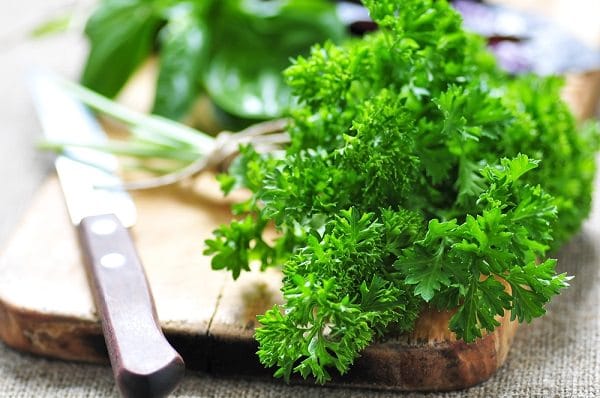
USDA Zone: 4-9
Botanical Name: Petroselinum crispum
Common Names: Peterselie, Prezzemolo, Peterselie, Persilja
Growing Requirements: Full sun to partial shade, evenly moist, mildly acidic soil, feeding with slow-release fertilizer before and during planting, seeds started indoors
Flavor Profile: Mildly bitter, similar to cilantro
Edible Parts: Leaves and stems
How to Cook: Use fresh leaves to garnish soups and salads. Cook dried herbs together with cheese-based sauces, pasta, and eggs.
Suitable Dishes: Foods containing a heavy garlic content, grilled meat, roasted chicken/lamb, vegetable curries of the French cuisine.
2. Cilantro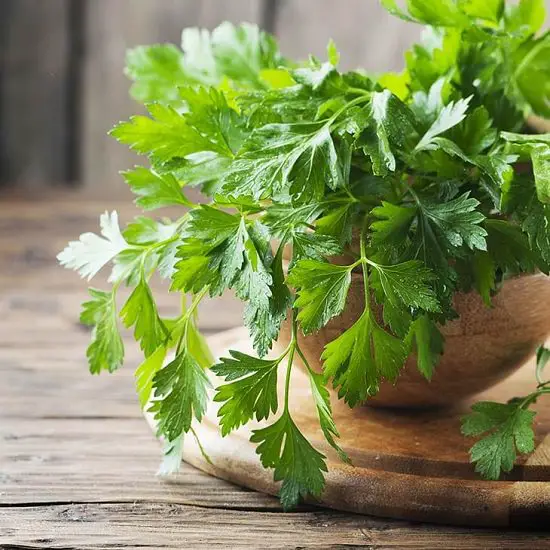
USDA Zone: 3-8
Botanical Name: Coriandrum sativum
Common Names: Dhania, Yuan-sui, Koriander, Koendoro, Kishnets posevnoi
Growing Requirements: Partial sun, moist and rich soil, nurture with water-soluble fertilizer after two weeks of growth
Flavor Profile: Zesty, lemon-like
Edible Parts: Raw or cooked leaves
How to Cook: You can add it at pre or post preparation of your meals.
Suitable Dishes: Soups, salads, curries, vegetables, fish and meats, making it one of the best in this list of cooking herbs.
3. Chives
USDA Zone: 3-10
Botanical Name: Allium schoenoprasum
Common Names: Oriental garlic, Asian chives, Chinese chives, Chinese leeks. Allium schoenoprasum
Growing Requirements: Full sun, consistent watering, all-purpose fertilizer (16:16:8), composting to 8-inches
Flavor Profile: Garlic-like and pungent
Edible Parts: Whole plant, including leaves and flowers
How to Cook: Toss chives at the end while cooking, sliced thinly, for a refined finish. You can also use coarsely chopped leaves as garnish.
Suitable Dishes: Dips, baked potatoes, quesadillas.
4. Sage
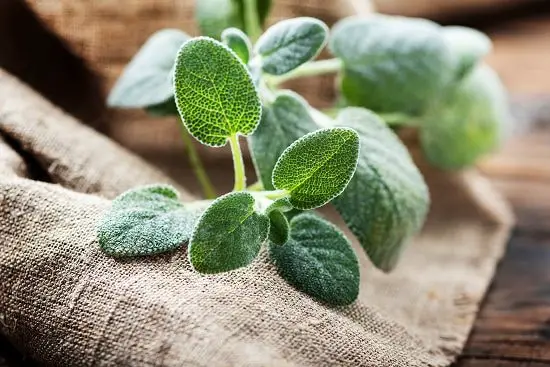
USDA Zone: 5-9
Botanical Name: Salvia officinalis
Common Names: Common sage, garden sage, golden sage, kitchen sage, true sage, culinary sage, Dalmatian sage, and broadleaf sage
Growing Requirements: Full sun, well-draining soil, protection from aphids, powdery mildew, springtime pruning of heavy, woody stems
Flavor Profile: Refreshing flavors like lemon and mint
Edible Parts: Leaves
How to Cook: You can add fresh leaves to meat stuffings, sausages, sandwiches, and pork dishes.
Suitable Dishes: All kinds of meats, making it one of the best in this list of cooking herbs.
5. Thyme
USDA Zone: 2-5
Botanical Name: Thymus vulgaris
Common Names: English thyme, summer thyme, winter thyme, French thyme, or garden thyme
Growing Requirements: Part sun, loamy, sandy soil, even watering, occasional trimming to prevent leggy growth, light mulching in winters, prevention of root rot
Flavor Profile: Pleasant and pungent, like cloves
Edible Parts: Stems and leaves
How to Cook: Chop of young green leaves and add to roast chicken, ham, desserts or cocktails as a garnish.
Suitable Dishes: Festive foods like turkey, scalloped potatoes, bread, and French Cuisine.
6. Oregano
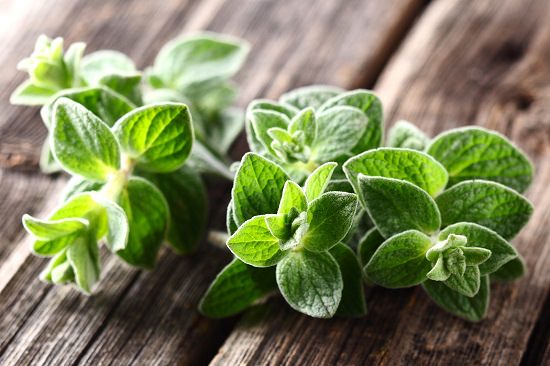
USDA Zone: 5-9
Botanical Name: Origanum vulgare
Common Names: Origanum majorana, sweet marjoram, marjoram, majorlane, majorane, and marjorlaine
Growing Requirements: Direct sun, warm indoor temperatures, adequate watering, monthly feeding, aphid control
Flavor Profile: Zesty; perfect for Italian dishes
Edible Parts: Dried and fresh leaves
How to Cook: Sprinkle on salads, pizzas, and sauces. Use as a garnish on seafood dishes or bake it along with poultry.
Suitable Dishes: All kinds of meats, cheeses, and sauces, making it one of the best in this list of cooking herbs.
7. Dill
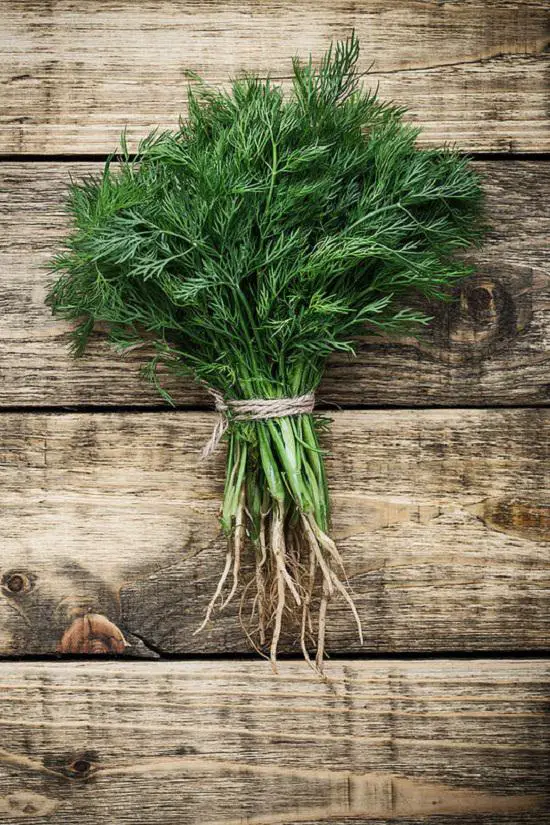
USDA Zone: 3-7 (in summer) and 9-11 (in winter)
Botanical Name: Anethum graveolens
Common Names: Suva, soya, garden dill, dill weed
Growing Requirements: Full sun, loamy soil, ample moisture, summer planting and protection from winds
Flavor Profile: Sharp and tangy
Edible Parts: Fresh and dried leaves
How to Cook: Add fronds to lend an earthy flavor to bland foods like cottage cheese and soups. You can even chew the leaves for a sweet-scented breath.
Suitable Dishes: Cucumbers, salads and all kinds of cheese.
8. Rosemary
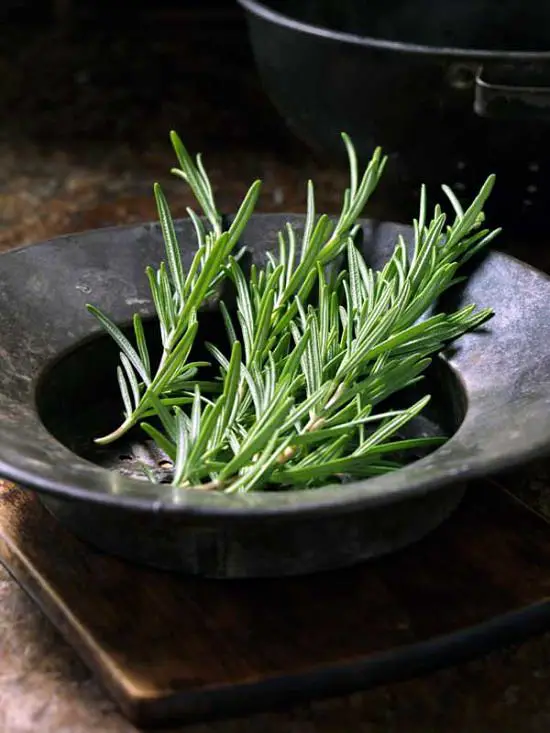
USDA Zone: 6-9
Botanical Name: Rosmarinus officinalis
Common Names: Salvia Rosmarinus, anthos
Growing Requirements: Full sun, loamy, sandy soil, regular pruning, even watering, occasional trimming of the blooms
Flavor Profile: Pungent, smoky and pine-like
Edible Parts: Stalks and dried and fresh leaves
How to Cook: Toss the leaves in the beginning or use them as garnishing, later on.
Suitable Dishes: Meats, sun-dried tomatoes, sauces, barbequed dishes.
9. Mint
USDA Zone: 3-11
Botanical Name: Mentha arvensis
Common Names: Mintha, pudina
Growing Requirements: Partial shade, mildly acidic soil, organic fertilizer monthly, regular pruning, weekly watering
Flavor Profile: Refreshing, similar to basil
Edible Parts: Leaves
How to Cook: Use fresh leaves as garnishing on savory dishes and refreshing drinks.
Suitable Dishes: Salads, drinks, ice-cream, tea, desserts, making it one of the best in this list of cooking herbs.
10. Sweet Basil
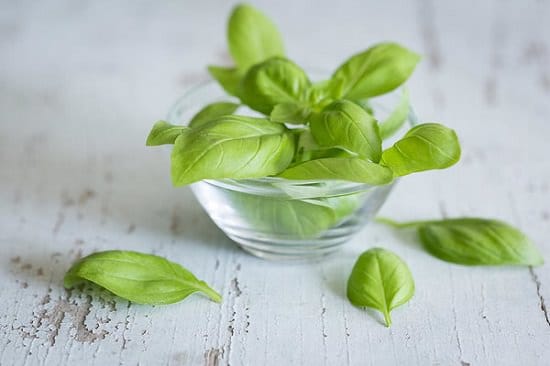
USDA Zone: 10
Botanical Name: Ocimum basilicum
Common Names: Great basil, tulsi, Thai basil
Growing Requirements: Full sun, rich, moist, well-draining soil, protection from frost, monthly feeding
Flavor Profile: Mixture of licorice and cloves
Edible Parts: Leaves, young stems
How to Cook: Add fresh leaves towards the end of cooking to preserve taste and color.
Suitable dishes: Sauces, sandwiches, salads, soups, pizza toppings.
11. Catnip
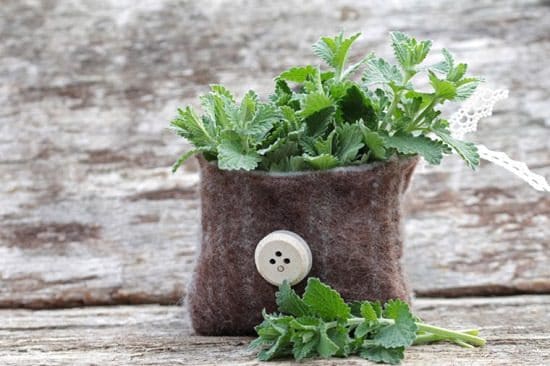
USDA Zone: 3 to 9
Botanical Name: Nepeta cataria
Common Names: Catswort, catwort
Growing Requirements: Direct sun, well-draining, loamy soil, feed the plant once every 3 to 4 weeks
Flavor Profile: Mixture of peppermint and spearmint
Edible Parts: Leaves and flowers
How to Cook: You can add catnip in salads and rub the meat with its leaves before roasting. Toss some dried and fresh leaves in your tea to have the sweet-spicy taste.
Suitable Dishes: Salads, teas, and meat dishes.
Check out our article on growing catnip here!
12. Celery

USDA Zone: 8 to 10
Botanical Name: Apium graveolens
Common Names: Celeriac or root celery, turnip-rooted celery
Growing Requirements: Full sun, rich-fertile soil with pH (5.8-6.8), water the plant regularly during the entire growing phase
Flavor Profile: Salty and mild bitter like spinach
Edible Parts: Leaves, stalks, and seeds
How to Cook: Add stalks and leaves of celery at the end of cooking.
Suitable Dishes: Stir-fry dishes, soups, stews, and casseroles, making it one of the best in this list of cooking herbs.
13. Curry Leaves
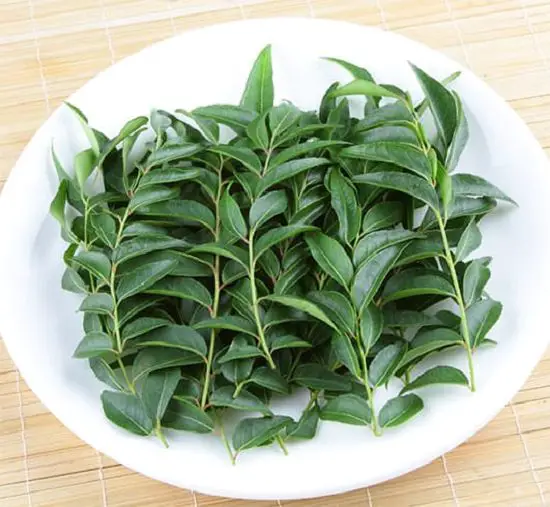
USDA Zone: 9-11
Botanical Name: Murraya koenigii
Common Names: Curry leaf tree, sweet neem leaves, kadi patta, kadhi limbdo
Growing Requirements: Full sun, well-drained soil, moderate watering, warm and humid conditions
Flavor Profile: Strong flavor similar to lemongrass, citrus, and anise
Edible Parts: Leaves
How to Cook: Use fresh or dried leaves in the beginning or at the end of cooking.
Suitable Dishes: Curries and salads.
Learn how to grow curry leaves here!
14. Lavender
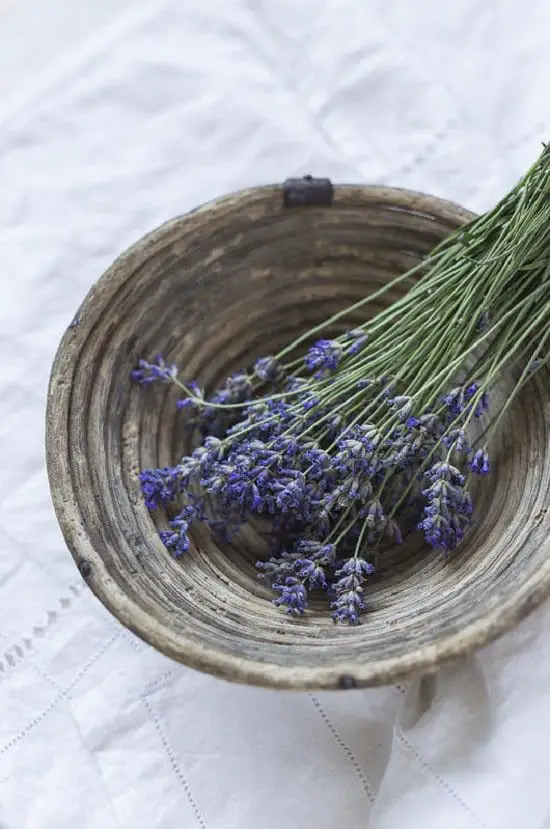
USDA Zone: 5-9
Botanical Name: Lavandula angustifolia
Common Names: True lavender or English lavender, garden lavender, narrow-leaved lavender, common lavender
Growing Requirements: Full sun, well-draining slight alkaline soil with pH of (6.5-7.5)
Flavor Profile: Herbaceous, sweet, and citrus with after taste of mint
Edible Parts: Leaves, buds, and stems
How to Cook: Boost the color of your dishes by garnishing with fresh or dried leaves.
Suitable Dishes: Salads, ice-cream, cake, meat marinades, baked bread and into the glass of wine.
Check out our article on growing lavender here!
15. Peppermint
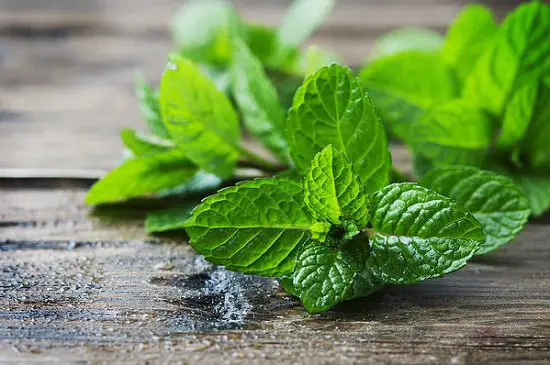
USDA Zone: 3-10
Botanical Name: Mentha × Piperita, Mentha Balsamea Wild
Common Names: Brandy mint, American mint, lamb mint, lammint
Growing Requirements: Full sun, rich, moist, well-drained soil
Flavor Profile: Cool, sweet, and menthol-like
Edible Parts: Leaves, essential oil of flowers
How to Cook: Use fresh and dried leave to prepare herbal tea. You can also use it as an essential oil in desserts, ice-creams, and chewing gum.
Suitable Dishes: Ice-creams, tea, and as a flavoring agent in many cuisines, making it one of the best in this list of cooking herbs.
16. Lemongrass
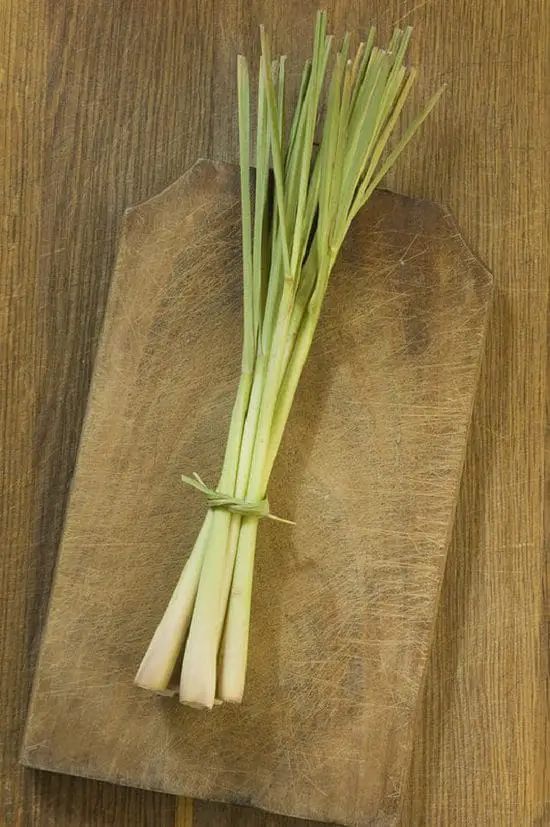
USDA Zone: 10-12
Botanical Name: Cymbopogon citratus
Common Names: West Indian lemongrass
Growing Requirements: Full sun, well-drained soil, warm, and humid conditions
Flavor Profile: Tangy, and lemon-like taste
Edible Parts: Tender stems
How to Cook: Remove the lower bulb, cut the soft stems in 2-3 inches and add them into soup or curry.
Suitable Dishes: Soups, stews, curries, and teas.
Learn how to grow lemongrass from seed, here!
17. Stevia
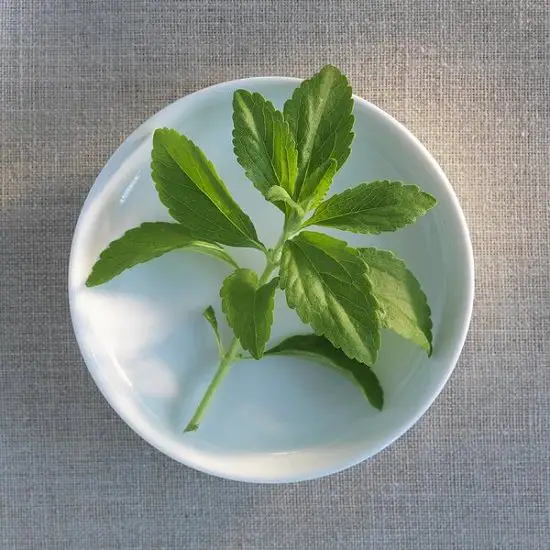
USDA Zone: 8-10
Botanical Name: Stevia rebaudiana
Common Names: Honey leaf plant, sweet chrysanthemum, sweetleaf stevia, sugar leaf
Growing Requirements: Full Sunlight, acidic, well-draining soil with a pH range of (6.7-7.2)
Flavor Profile: Sweet with bitter after taste
Edible Parts: Leaves
How to Cook: The extracts of stevia leaves can be used in lieu of sugar by calorie-conscious people.
Suitable Dishes: Desserts, sweets, and shakes.
18. Laurel Bay Leaves
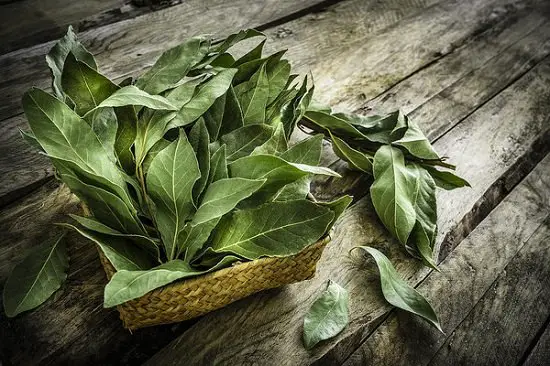
USDA Zone: 8-11
Botanical Name: Laurus nobilis
Common Names: Sweet bay, true laurel, Grecian laurel, Tej Patta
Growing Requirements: Full sun exposure, well-drained soil with a good amount of compost
Flavor Profile: Taste is bitter and sharp, though the aroma is mildly floral and herbal
Edible Parts: Leaves are used as a flavoring agent
How to Cook: Use dried bay leaves in cuisines at the beginning or end to boost the flavor and aroma.
Suitable Dishes: Soups, stews, teas, and braises.
Check out our article on growing Bay Laurel here!
19. Chamomile
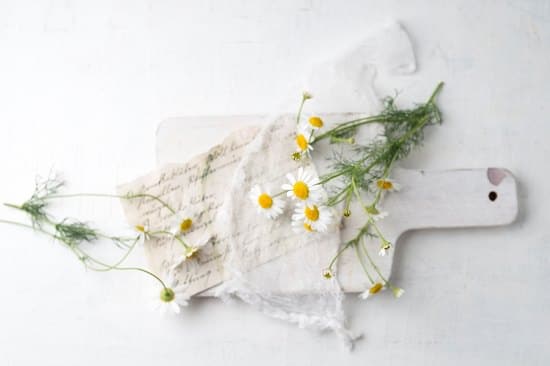
USDA Zone: 3-9
Botanical Name: Matricaria chamomilla
Common Name: German chamomile, Hungarian chamomile, scented mayweed
Growing Requirements: Partial shade to full sun in dry soil. Avoid excessive use of fertilizer as it can cause weakly flavored foliage
Flavor Profile: The aroma and flavor of fresh and dried flowers are like a crisp apple
Edible Parts: Leaves and flowers
How to Cook: Sprinkle fresh or dried flowers and leaves in salads or in a mug of warm water to make refreshing herbal tea.
Suitable Dishes: Salads and beverages.
20. Bee Balm
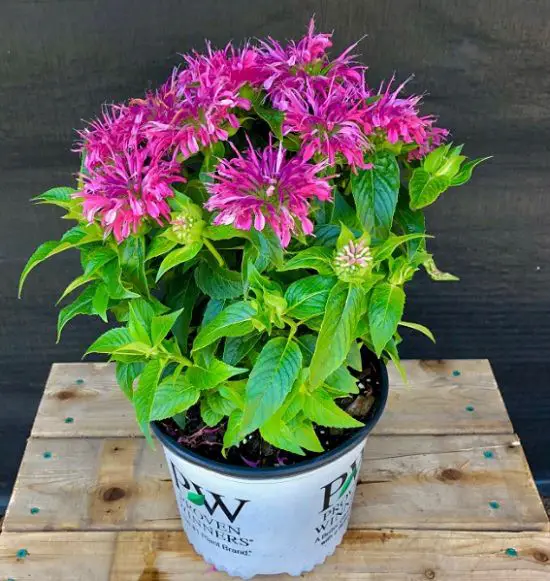
USDA Zone: 4-9
Botanical Name: Monarda
Common Names: Horsemint, bergamot, oswego tea
Growing Requirements: Full sun to partial shade, rich, moist, loamy soil
Flavor Profile: Spicy and mint-like
Edible Parts: Flowers and leaves
How to Cook: Garnish salads and other cuisines with bee balm flowers, to enhance the flavor you can add fresh or dried leaves in cuisines.
Suitable Dishes: Salads, pizza, bread, and beverages making it one of the best in this list of cooking herbs.
21. French Tarragon
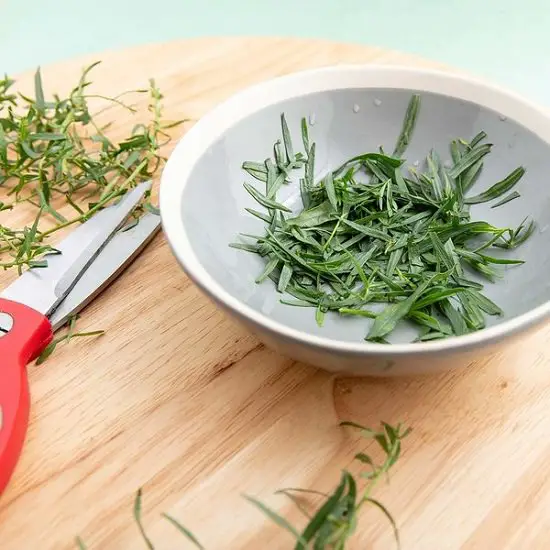
USDA Zone: 4-5
Botanical Name: Artemisia dracunculus
Common Names: Sativa, estragon
Growing Requirements: Full sunlight to partial shade, well-drained soil
Flavor Profile: Spicy anise-like taste
Edible Parts: Flowers
How to Cook: Sprinkle dried flowers at the end of cuisines.
Suitable Dishes: Soups, salads, sauces, and meat dishes.
22. Fennel
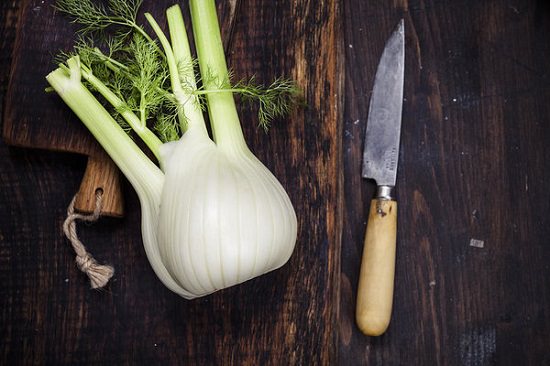
USDA Zone: 4-9
Botanical Name: Foeniculum vulgare
Common Names: Bitter fennel, common fennel, sweet fennel, roman fennel
Growing Requirements: Full sunlight, rich, moist, well-drained soil
Flavor Profile: Sweet, aromatic, anise and licorice-like taste
Edible Parts: Bulb, stalk, seeds, and feathery fronds
How to Cook: For salads, slice raw fennel bulbs in small pieces for crispy, sweet taste. You can use tender leaves for garnishing.
Suitable Dishes: Salads, desserts, and soups.
23. Chervil
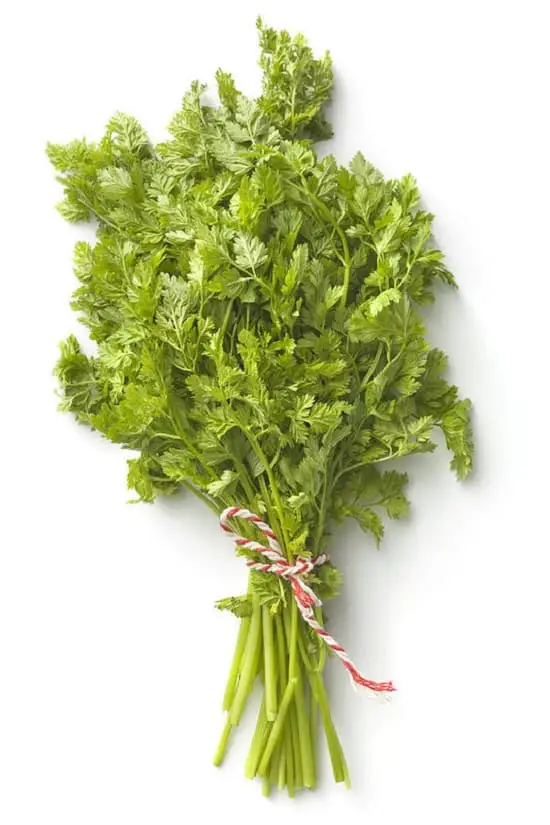
USDA Zone: 5-7
Botanical Name: Anthriscus cerefolium
Common Names: French parsley, garden chervil
Growing Requirements: Full sun in winters and partial shade in summers, rich, loamy soil
Flavor Profile: Mild taste with a hint of anise or licorice
Edible Parts: Leaves
How to Cook: Add chopped chervils in omelets, salads, and soups.
Suitable Dishes: Salads, soups, egg dishes and mainly in french cuisines, making it one of the best in this list of cooking herbs.
24. Winter Savory
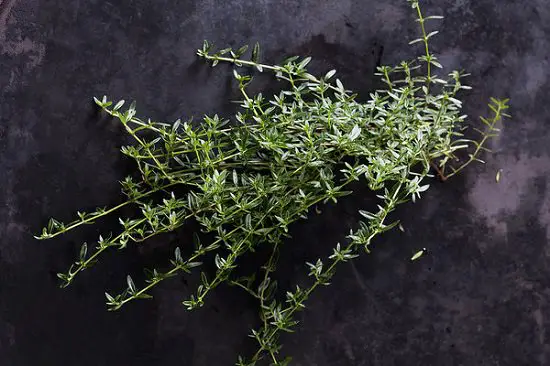
USDA Zone: 6
Botanical Name: Satureja montana
Common Names: Mountain savory
Growing Requirements: Full sunlight, well-draining soil with pH 6.7
Flavor Profile: Strong peppery taste
Edible Parts: Leaves
How to Cook: Use winter savory to garnish salads and for stuffing. Rub the leaves on beef, pork, and chicken before roasting and grilling.
Suitable Dishes: Soups, stews, sauces, and beverages.
25. Cuban Oregano
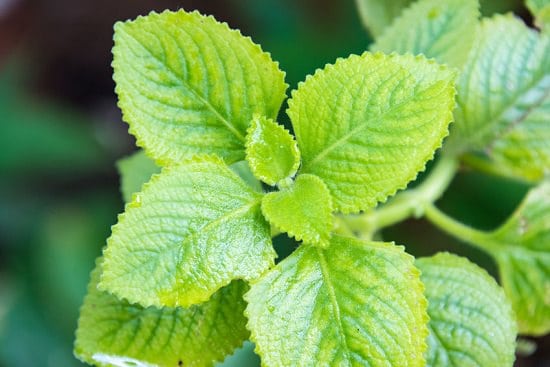
USDA Zone: 9-11
Botanical Name: Plectranthus amboinicus
Common Names: Mexican mint, Spanish thyme, Indian borage, Caribbean oregano, and broadleaf thyme
Growing Requirements: Partial sun, well-draining, nutrient-rich soil
Flavor Profile: Strong taste than Greek oregano
Edible Parts: Fresh or dried leaves
How to Cook: Use crushed leaves into meat dishes, fresh leaves can be used in smaller quantities as stuffing in meat, fish, in stews and soups as well.
Suitable Dishes: Mediterranean cuisines, pizzas, soups, and stews.
26. Marjoram
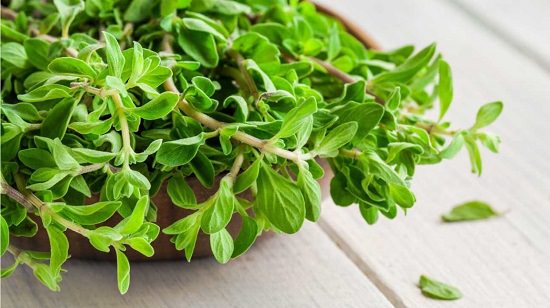
USDA Zone: 7-9
Botanical Name: Origanum majorana
Common Names: Sweet marjoram, Majorana hortensis
Growing Requirements: Full sun, well-drained soil with pH 6.7-7.0, feed the plant twice with a balanced fertilizer
Flavor Profile: Sweet and mild, similar taste to oregano
Edible Parts: Dried and fresh leaves
How to Cook: Use marjoram while roasting meat, or wrap it in a bundle to promote the taste of slow cooking dishes.
Suitable Dishes: Greek, Italian, and Middle Eastern cuisines, salads, stews making it one of the best in this list of cooking herbs.
Learn how to grow Marjoram here!
27. Catmint
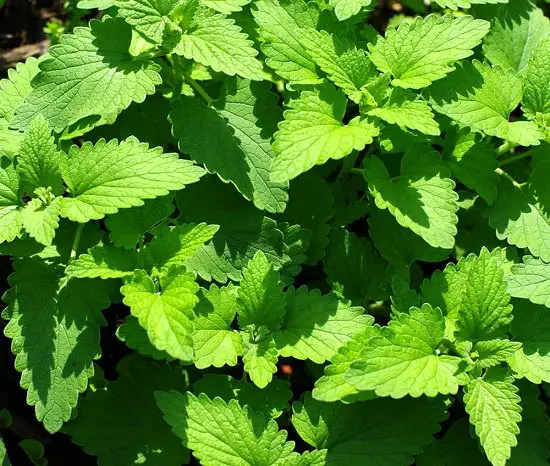
USDA Zone: 4-8
Botanical Name: Nepeta × faassenii
Common Names: Catmint
Growing Requirements: Full sun to part shade, well-draining lean soil, avoid too much fertilizer will lead to thin and droopy leaves
Flavor Profile: Sweet aroma, slightly mint-like taste
Edible Parts: Flowers and leaves
How to Cook: Use fresh or dried leaves and flowers to make a herbal tea. You can use old leaves as a flavoring agent in dishes.
Suitable Dishes: Salads, Tea and beverages.
Check out our article on 20 types of mint that you can grow here!
28. Lemon Balm
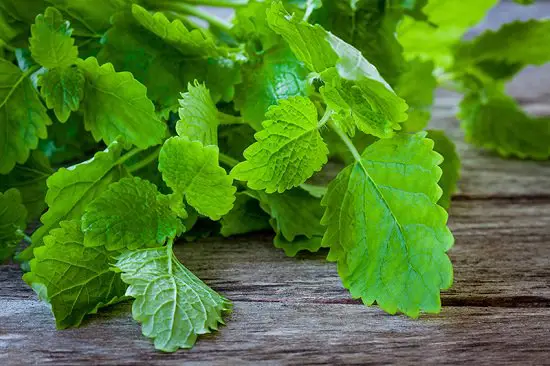
USDA Zone: 4a-9b
Botanical Name: Melissa officinalis
Common Names: Balm mint, common balm
Growing Requirements: Full sun, fertile, well-drained, sandy soil
Flavor Profile: Similar flavor like lemongrass with an after taste of mint, citrus-like fragrance
Edible Parts: Leaves
How to Cook: Toss whole leaves in green salads or as garnishing in fruit salads. You can also add lemon balm leaves in seafood and chicken stews.
Suitable Dishes: Salads, soups, and sauces.
29. Holy Basil
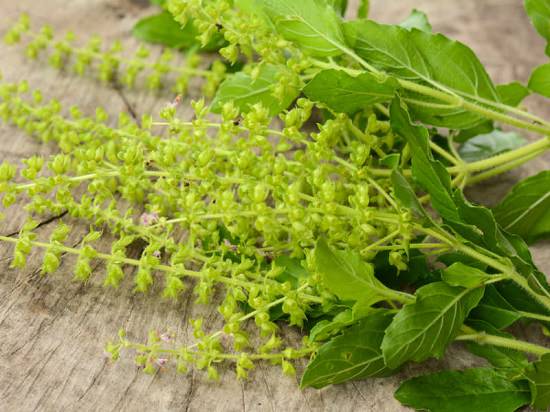
USDA Zone:10b-11
Botanical Name: Ocimum tenuiflorum
Common Names: Holy basil, tulsi
Growing Requirements: Full sun, well-draining light soil
Flavor Profile: Spicy flavor, strong aroma, and taste
Edible Parts: Leaves
How to Cook: Holy basil is mostly used in Indian cuisines and considered pious among Hindu communities. You can use fresh or dries leaves in teas and other beverages as well.
Suitable Dishes: Thai dishes, soups, salads, and teas making it one of the best in this list of cooking herbs.
Learn how to grow Basil here!
30. Ginger Leaves
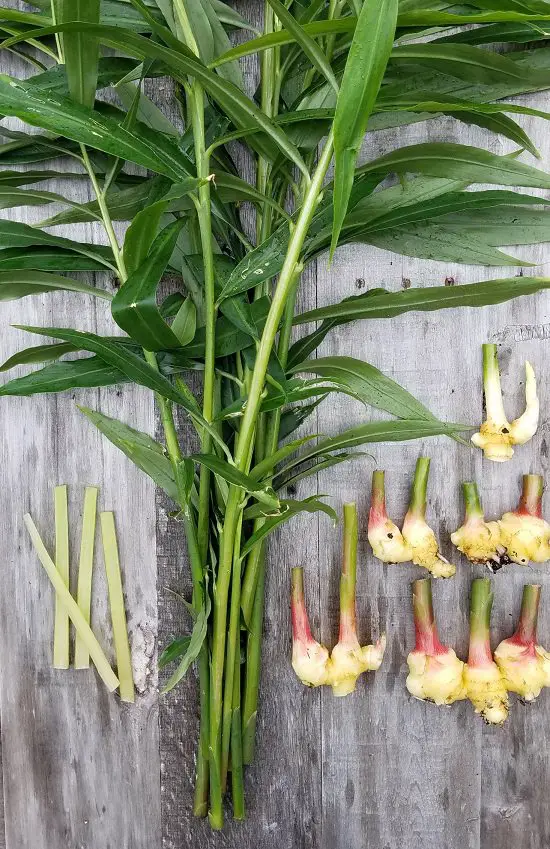
USDA Zone: 7
Botanical Name: Zingiber zerumbet
Common Names: Pinecone ginger
Growing Requirements: Full sun, rich, loose soil
Flavor Profile: Tender, crunchy, and less pungent than ginger, slightly sweet and pepper-like
Edible Parts: Leaves and roots of the plant
How to Cook: Add ginger leaves for steaming, sauteing, and boiling. You can use tender leaves in salads and for garnishing as well.
Suitable Dishes: Salads, stews, and soups.
31. Culantro
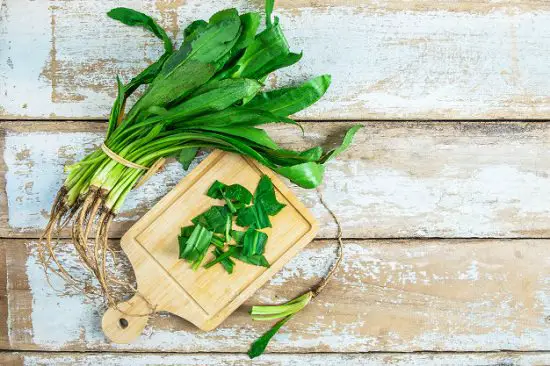
USDA Zone: 10-11
Botanical Name: Eryngium foetidum.
Common Names: Fitweed, long coriander, recao, chadon beni
Growing Requirements: Shaded location, well-drained consistently moist soil
Flavor Profile: Stronger flavor than coriander
Edible Parts: Dried or fresh leaves
How to Cook: Use cilantro leaves for strong flavor in seasoning, garnishing, and in the marination.
Suitable Dishes: Stews, sauces, and salads.
32. Betel Leaf
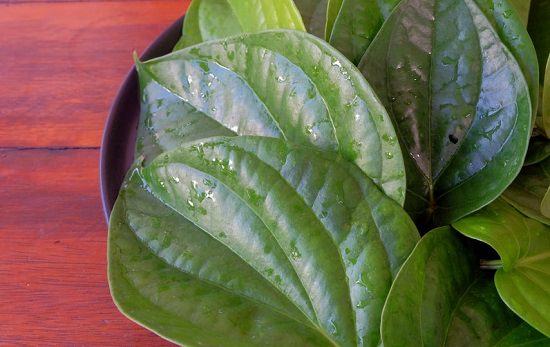
USDA Zone: 9-11
Botanical Name: Piper betle
Common Names: Betel quid, paan
Growing Requirements: Partial shade, slightly acidic, sandy-loamy, wet soil. It needs hot and humid conditions
Flavor Profile: In crushed form, it oozes peppery scent
Edible Parts: Leaves
How to Cook: Mainly used as a mouth freshener in Asian countries. Though betel leaf is also used as a culinary herb in dishes to boost the aroma and flavor of cuisine.
Suitable Dishes: Mouth freshener, desserts, and beverages making it one of the best in this list of cooking herbs.
Check out our article on growing Betel Leaf here!
33. Lemon Verbena
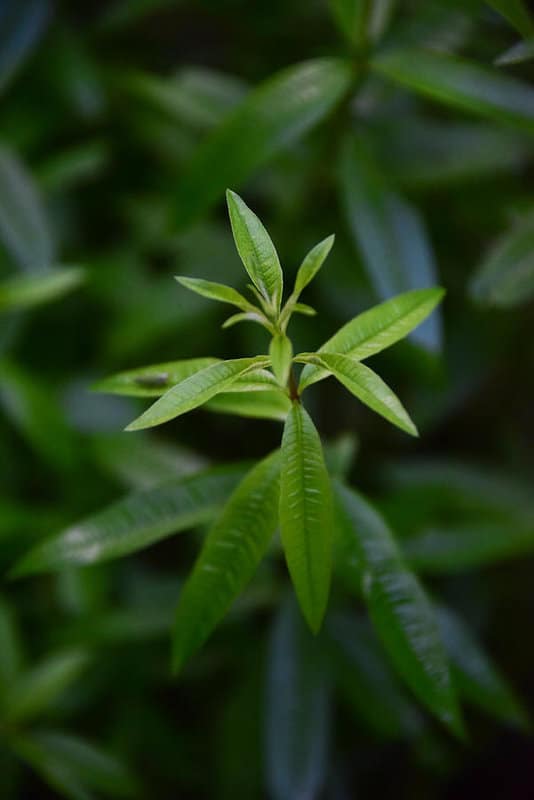
USDA Zone: 8-10
Botanical Name: Aloysia citrodora
Common Names: Lemon beebrush, lippia, cedronella, erba, ning mang mabinchou, meng ma bincao
Growing Requirements: Well, draining, organic-rich soil. Avoid keeping the plant in direct sun for a long duration
Flavor Profile: It has a strong, lemon-like flavor with hints of a fruity aroma
Edible Parts: Leaves
How to Cook: Mainly used in beverages and fruit-based drinks, in Asian and European countries.
Suitable Dishes: It is used extensively in puddings, jams, and desserts. It also pairs well with seafood.
34. Wild Pansy

USDA Zone: 7-9
Botanical Name: Viola tricolor
Common Names: Heartsease, Heart’s-ease, Johnny Jumpup, Johnny-jump-up
Growing Requirements: Full to Partial Sun. They like rich and well-drained soil. Space them apart 7-12 inches
Flavor Profile: Mild with a peppery hint
Edible Parts: Flowers
How to Cook: Can be cooked with beef and stews for an added aroma.
Suitable Dishes: It is mainly used in salads and soups and also used to add color and minty flavor to cocktails making it one of the best in this list of cooking herbs.




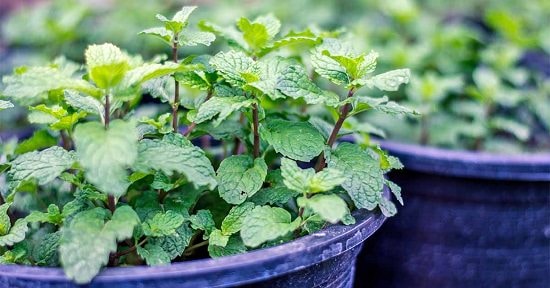

Very much appreciated. Informative and well compiled.
Thank you.
Thanks Google, for helping me to know about the herbs and their flavours, I’ll try to follow the instructions.